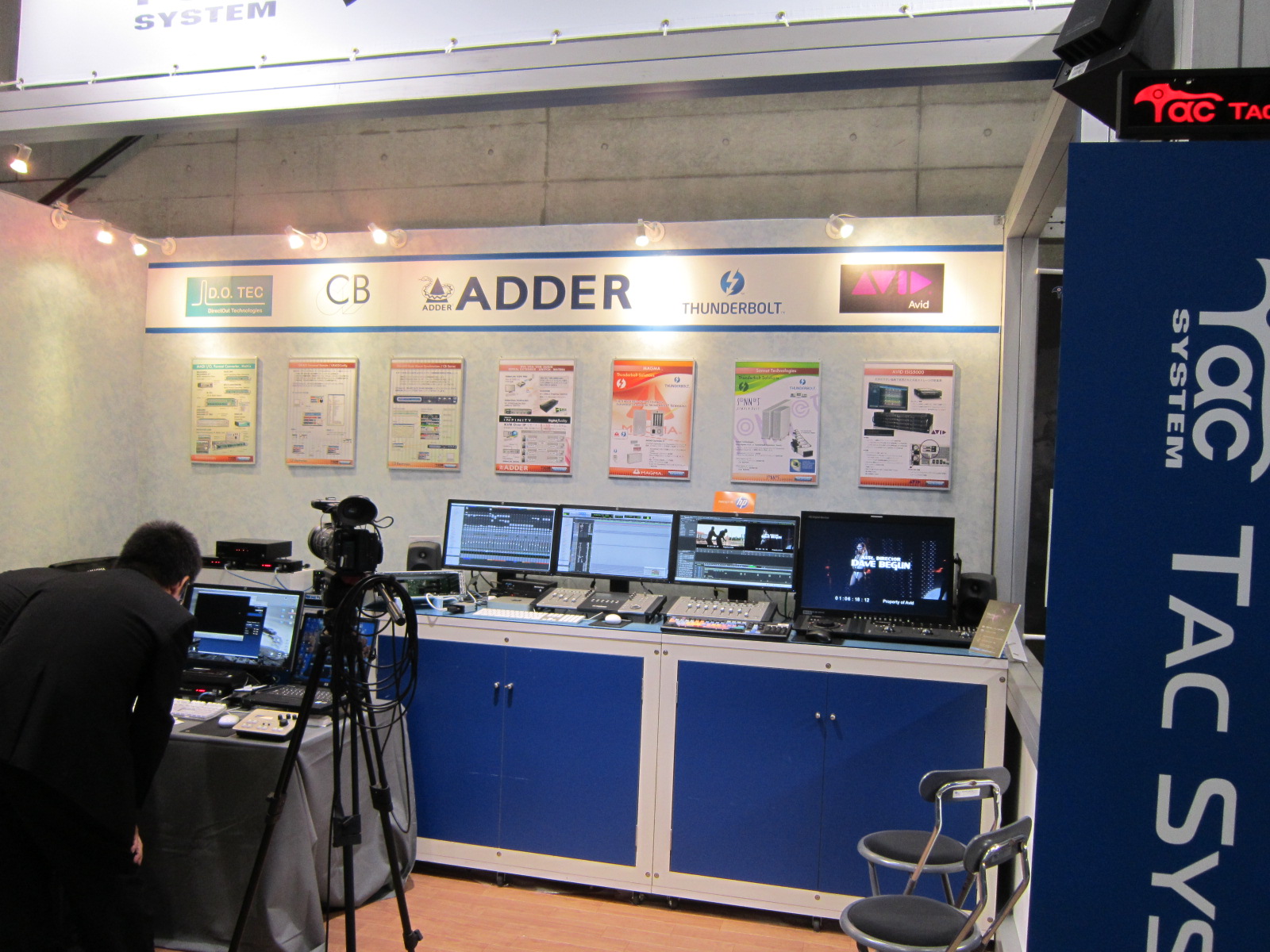Tac System exhibits a variety of products including the latest version of iZotope's integrated tool for mastering, "OZONE5"; ADDER's remote KVM system; and its own surround upmix software
2011.11.18 UP

Tac System exhibited a variety of products including "OZONE5", the latest version of iZotope's integrated tool for mastering which went on sale on 16th November; ADDER's KVM remote system; and the latest version of its own surround upmix software, "NML Revcon-RS". In addition to these products, Tac System introduced key functions and operability with demonstrations.
■ "OZONE5" that supports 3D spectrogram and loudness meters
OZONE5 is the latest version of iZotope's integrated tool for mastering. This product integrates the following 8 tools: "maximizer", "EQ", "multiband dynamics", "multiband stereo imaging", "post-EQ", "multiband harmonic exciter", "reverb", and "dithering". "OZONE5 ADVANCED" is offered as a more sophisticated version.
Its features include a 3D spectrogram meter that realizes "acoustic visualization". In a 3D meter, it provides a color-coded display of frequency distribution per acoustic data such as musical instruments and vocals. As a result, sound intensity and range can be instantly understood, and it enables the control and management of acoustic material.
A function that drew attention as a new broadcasting audio standard was the product's support for loudness meters. Loudness meters can efficiently control the sense of volume close to a human's ideal hearing range, and look to replace the electronic VU meters which are currently in general use.
■ Host of ADDER's KVM switches exhibited
Tac System exhibited ADDER's products, which it started to handle from this year. ADDER is a world famous manufacturer that produces products such as the KVM remote systems for professional use, and such is the high credibility of their equipment, they have been adopted by the BBC.
"AdderLink Infinity" is an advanced remote network system which sends and receives full DVI-D (1920x1080@60Hz), full speed USB 2.0, audio (3.5 phi Stereo Jack) and RS232 (COM port) by IP. Unlike the existing KVM system, matrix functions such as extension and conversion can be realized through IP address management. In addition to the standard connections within the studio, connections between distant places are also possible, enabling equipment located in distant places to be controlled remotely via an IP network.
"AdderLink X-DVI PRO" is a KVM extender that allows Full DVI-D (1920x1200@60Hz) and Full speed USB 2.0 to be lengthened as much as 50 meters using just one cable. The receiver is equipped with a USB-Ax4 hub. Because Full DVI-D (1920x1200@60Hz) and Full Speed USB2.0 transmissions only require one cable, batching systems can easily be created.
"AdderView Pro" is a 4:1-converting KVM switch that supports DualLink DVI-I, full USB 2.0, and audio (3.5 phi Stereo Jack). 4 personal computers can be switched and controlled from 1 terminal. A significant feature is its high stability due to being equipped with ADDER's original "True Emulation USB 2.0" function. Even if the USB port is switched to a different PC, it will maintain a normal connection.
"CCS4USB" is a KVM switch that uses ADDER's original "Freeflow Control" technology to control 4 PC screens as if they were one. It was explained that 1 PC's mouse can move freely across the display screens of 4 PCs, and by simply clicking the window you wish to operate, the keyboard and mouse will automatically switch to those of the relevant computer. Not only can this be applied to audio systems, but also to trading systems for the securities industry.
■ Latest version of the "NML Revcon-RS" surround upmix software on display
The latest versions of Tac System's own products were also displayed, one of which was the "NML Revcon-RS" surround upmix software. This is based on the same technology as the reverb component removal plug-in, "NML Revcon-RR."
By applying the echo separation technology it jointly developed with NTT Media Lab (NTT Learning Systems), 5.1ch surround sound was obtained from monaural and stereo sound files with this upmix process. This works by separating the echo component that was originally in the material, and then remixes it into the surround sound. This is said to allow a natural surround transformation, even if it is non-effect.








